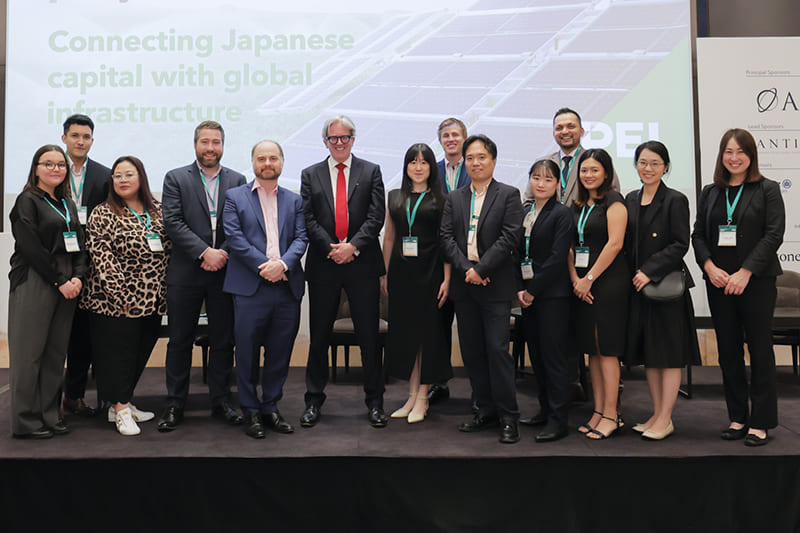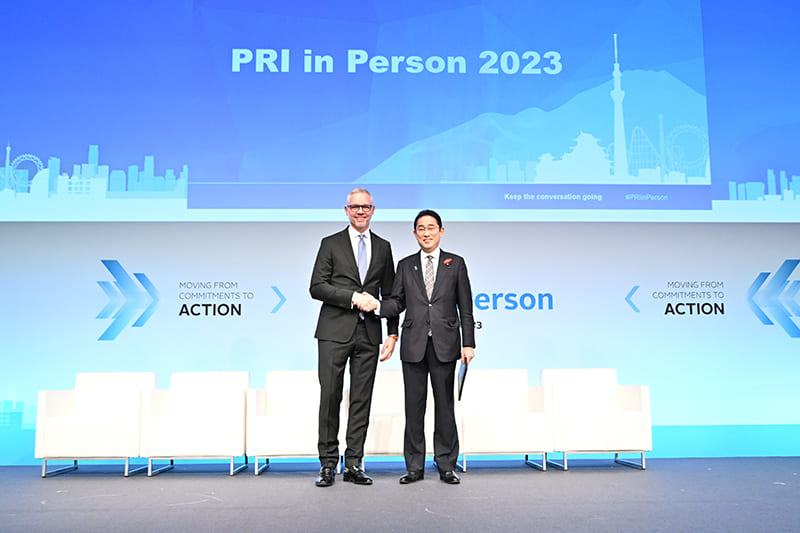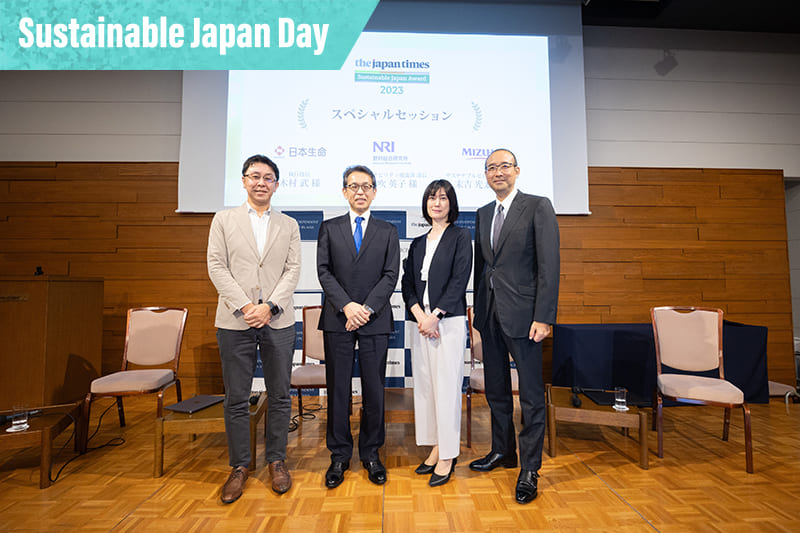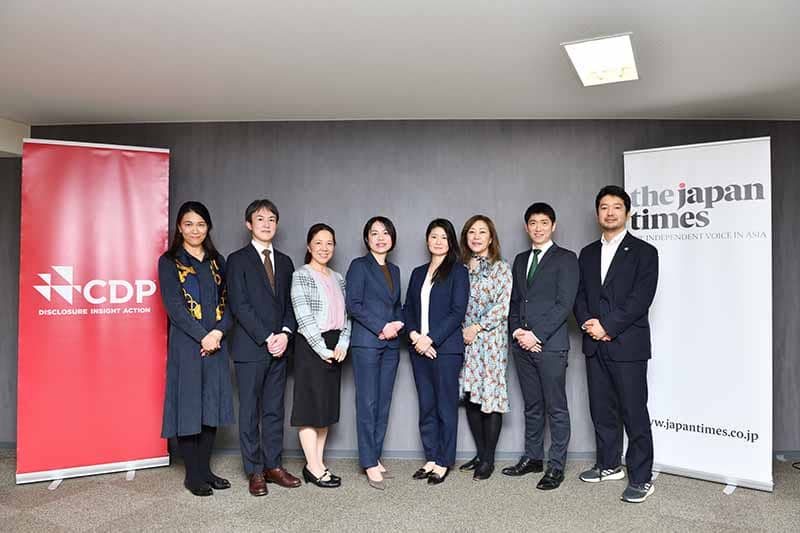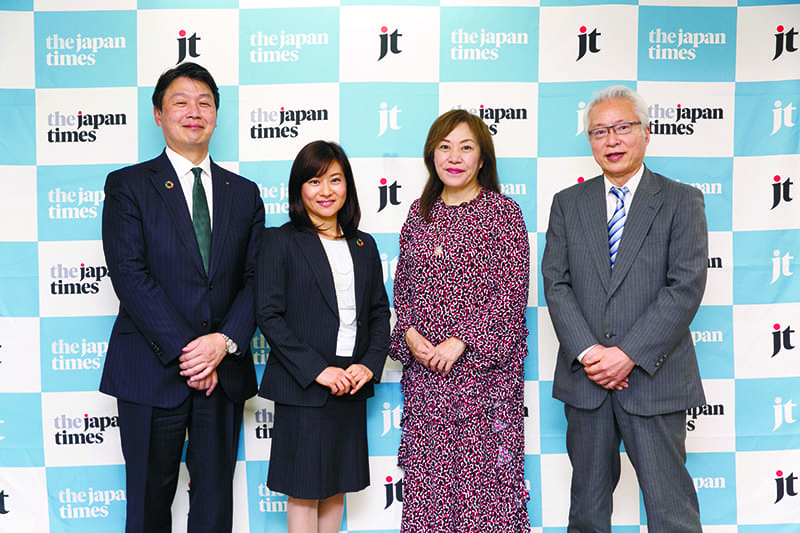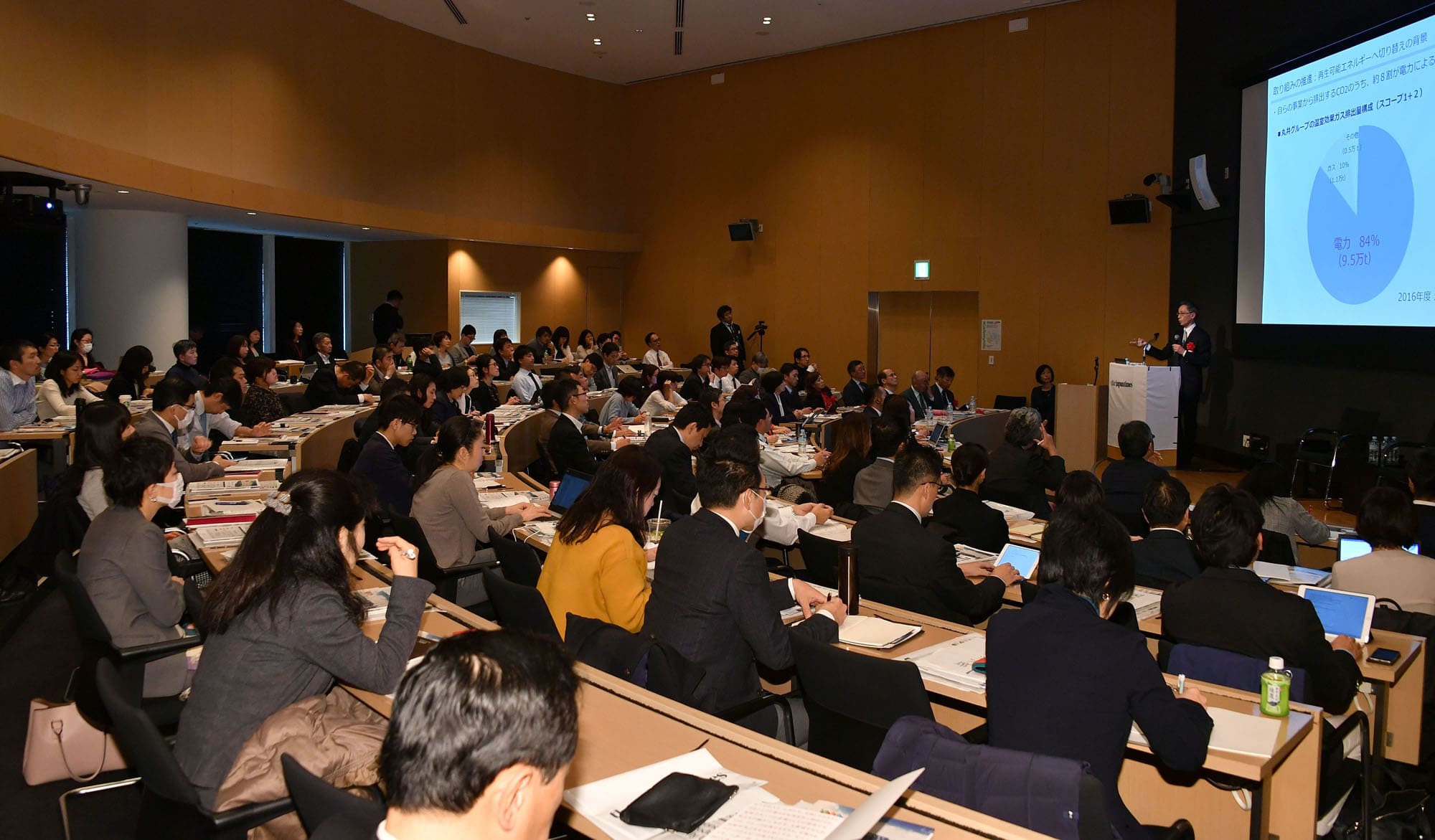July 26, 2024
Forum: Private debt funds attracting more investors
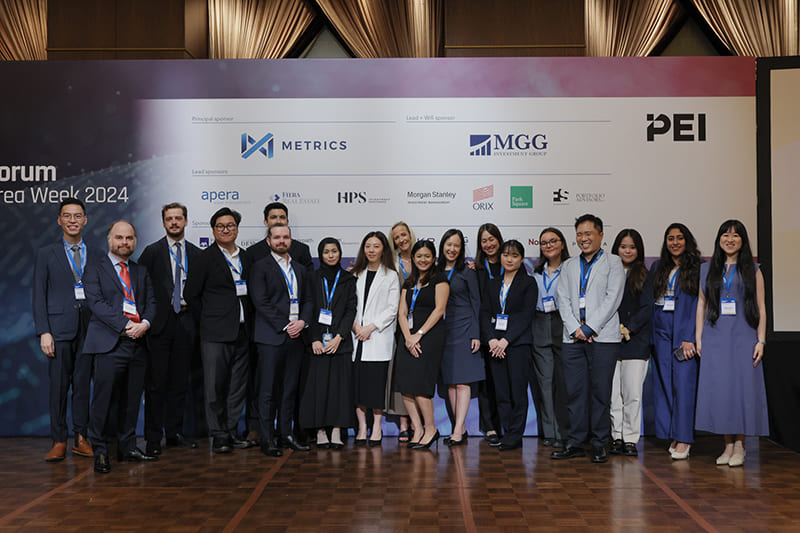
Investment specialists gathered on June 27 to learn more about one of the hottest trends in the financial world: private debt investment.
The PDI Tokyo Forum 2024 attracted 300 attendees from Europe, the United States and Asia, including 180 institutional investors from Japan.
“I think it’s interesting to note this is the fastest-growing event we’ve run in Asia in the last 15 years since we started. And I think that really reflects on the strength and interest in the private debt asset class as well,” Andrew Wolff, the director of forum host PEI Group Japan K.K., told the audience in his opening remarks. “And I think that really reflects on the strength and interest in the private debt asset class as well.” PEI is a global information group focusing on financial assets.
Private debt funds, providing loans mainly to smaller companies that are not yet capable of going public, produce high returns partly due to liquidity premiums — additional compensation for assets that cannot be easily converted into cash — on the debts, as well as the recent high interest rates in the U.S. and Europe.
The high returns have attracted investors in the last decade, and the assets under management are expected to grow further. According to a report from the investment data provider Preqin, the assets will hit $2.8 trillion by 2028, almost double the figure of $1.5 trillion in 2022.
This market has expanded mainly in the U.S. and Europe as tighter banking regulations after the global financial crisis in 2008 prompted banks to pull back on loans to companies with low credibility and tilt toward top-tier businesses, allowing more space for nontraditional lenders to invest in such companies through private debt funds.
Virtuous investment cycle
Wolff’s opening remarks were followed by a keynote speech on asset management reforms in Japan by Saiko Nakagawa, the director for asset management business at Japan’s Financial Services Agency.
Nakagawa explained a series of measures taken by the government to support Japan’s investment environment by creating a virtuous cycle of finance and the economy in which people invest in financial products so that companies can use the capital to grow, benefiting people’s lives in turn. Currently, the country’s household assets stand at around 2.1 quadrillion yen ($13.4 trillion), and more than half of that sits in bank deposits, she said.
Japan mainly aims to promote the entry of new asset managers based both at home and abroad, and to prompt asset owners such as pension funds and insurance companies to enhance their management and accountability.
Other reforms include the expansion of the Nippon Individual Savings Account (NISA) program exempting small personal investments from taxes as well as the creation of a new institution for educating the public, the Japan Financial Literacy and Education Corp. The government also revised a law to make financial products’ distributors and advisers better prioritize the interests of their clients. In the corporate arena, companies are being urged by the Tokyo Stock Exchange to improve their capital efficiency.
With these steps, the government hopes asset managers will provide funds to fast-growing firms including startups, improving their governance and raising their value through the investments as well as stewardship and engagement activities, Nakagawa said.
“I hope asset managers will widen business in Japan and achieve sustainable growth together with clients,” Nakagawa said, adding that the watchdog will seek a balance between creating a good financial environment and pursuing investor protection, market fairness and financial stability.
Inflation, policy changes, loans
In the first panel session, specialists discussed the latest trends around private debt investment, including factors that could impact interest rates or borrowing costs, such as inflation and changes in policies and loan demand. Panelists agreed that inflation is endemic in the U.S., the main market for private credit, although data released two weeks after the forum showed that consumer prices unexpectedly declined by 0.1% from May to June, and the year-on-year inflation rate eased to 3%.
U.S. interest rates were not considered likely to ease quickly because neither of the main candidates in the presidential election at that time, President Joe Biden and former President Donald Trump, was particularly “fiscally disciplined,” said Colbert Cannon, the managing director for New York-based HPS Investment Partners, which manages about $115 billion in assets, with about 85% of that in private credit. “If you think about the implications of that election and the potential for further spending to drive inflation, you might think that we could be in a higher-for-longer world,” he said.
Greg Racz, the co-founder and president of MGG Investment Group, a New York-based $5 billion non-sponsor-focused direct lender, also said we could see more inflation in the future. “I think if Trump wins and institutes the tariffs that he’s talked about, that would for sure have pretty global ramifications that could upend supply chains. You could see inflation getting worse,” he said. But elections are hard to predict, so investors need to anticipate all possibilities and protect themselves, he added.
Despite the stubborn inflation, however, midsize U.S. companies have been resilient and passed through inflation, said Jeff Levin, managing director for Morgan Stanley Investment Management, which manages $200 billion in alternatives out of its overall $1.5 trillion in assets under management.
Although interest coverage ratios, which show the ability of companies to pay the interest on outstanding debts, are down from where they once were, the number of defaults in the U.S. direct lending market continues to be low. Also, the nonaccrual rates — measuring unsecured loans on which payments haven’t been made in months — in his company’s portfolios are modest, Levin said.
“I do think that (interest) rates now have been high enough for enough of a period of time where, if we were going to see a significant crash driven strictly by interest rates, I think we would have seen it already,” he continued. “I’m not overly concerned about the scenario where rates stay higher for longer.”
As for the private credit market in Europe, panelists expected some uncertainty because the event was held just before major elections in Europe — in France on July 4, in which the leftist New Popular Front coalition came ahead but no party had a majority, and the United Kingdom on July 8, which gave the Labour Party a landslide victory in the lower house of Parliament and made party leader Keir Starmer the new prime minister. “Actually, we’re at quite an inflection point,” said David Wilmot, a partner at Apera Asset Management, which is based in London, Paris, Munich and Luxembourg and has €3.5 billion ($3.8 billion) in assets under management.
Wilmot said there were more people expecting that British interest rates would soften and some speculation about two or three rate cuts ahead. “But we’re just in the land of uncertainty. To be honest, we don’t know, and we don’t know how the markets will react, whether that will have any implications, or the speed with which the rate reductions happen. But the general trajectory seems to be it will go down,” he said, adding that he had a similar view on the European Central Bank’s monetary policy.
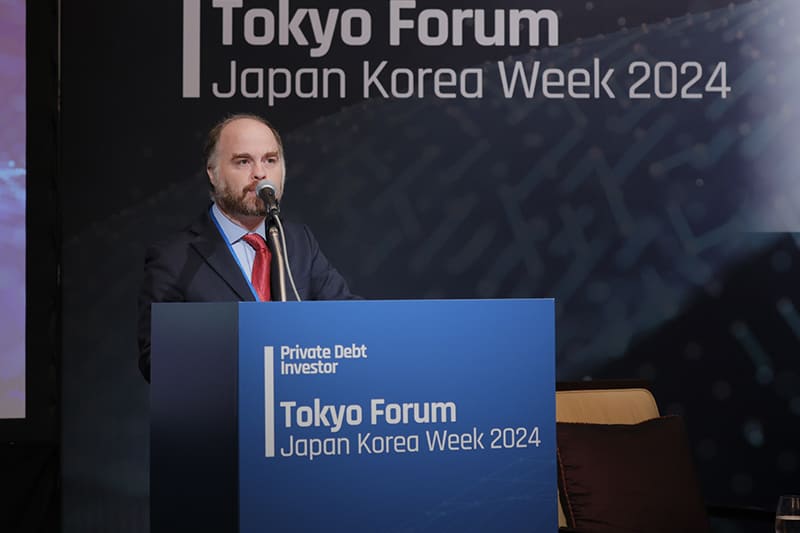
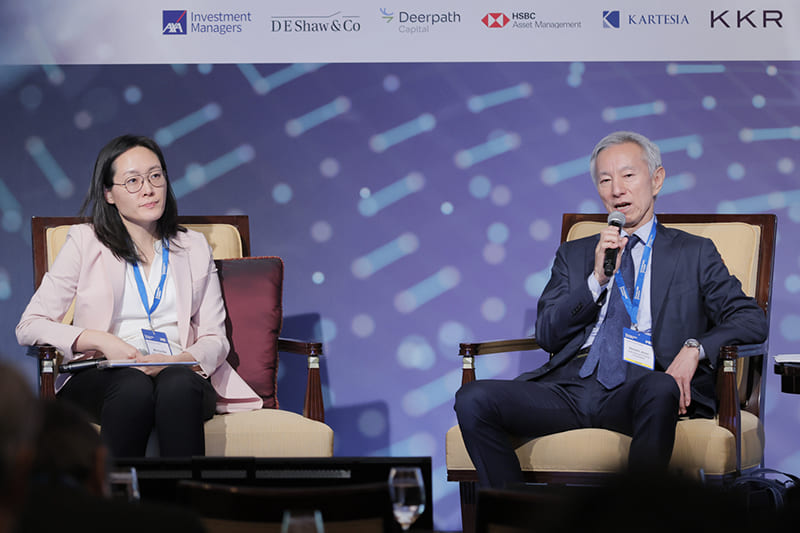
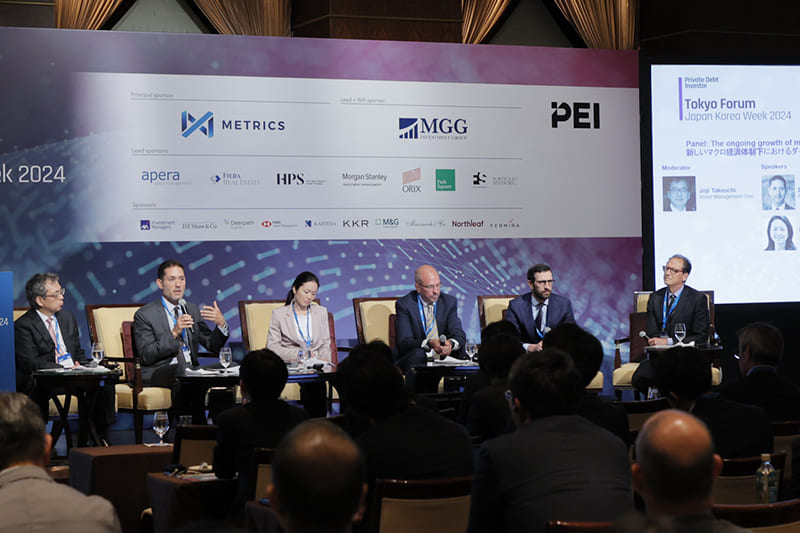
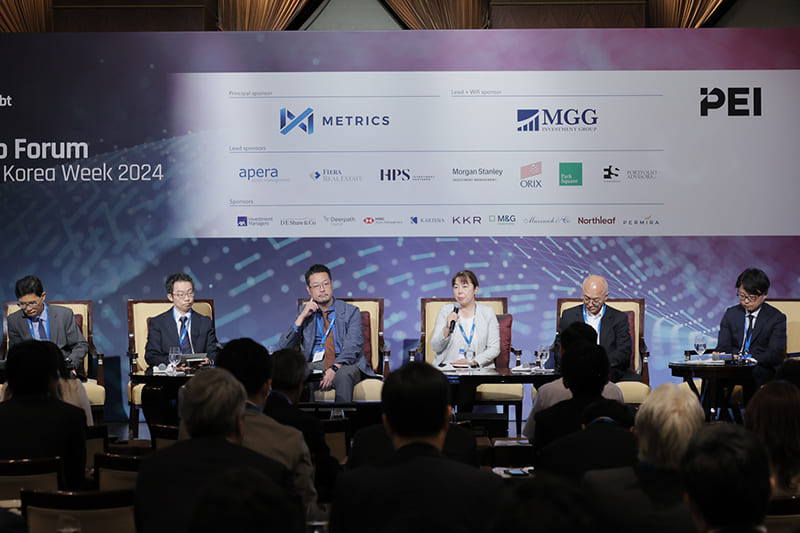
M&A deals picking up
Panelists agreed that the volume of merger and acquisition deals, one of the major driving forces for private lending, had started to show a pickup in recent months after a sharp decline in the past year and a half due to the U.S. Federal Reserve Board’s tight monetary policy pushing up the cost of M&As.
Cannon said about two-thirds of HPS’s transactions are usually M&A-related, and the rest are for refinancing. “That has been inverted in the last 18 months given the rates move. M&A volume has fallen down significantly,” he said, adding that HPS had recently started to see the volume pick up again.
Morgan Stanley’s Levin also said there was a healthy uptick in the M&A volume, although the level was not close to the pre-2023 environment. In the past year, about half of the capital it had invested was for leveraged buyouts, a major type of acquisition by companies seeking to raise funds in the private credit market, and the other half was for refinancing.
He noted a recent sharp increase in the private equity market, indicating strong demand in the overall private capital market and thus having a positive impact on private credit deals. “I’m not concerned about the private equity tailwind not coming through for the benefit of private credit,” he said. “I do think it will happen — hard to say exactly when, but I think it certainly will.” In the lower-middle segment of the market, the demand for private credit has been growing regardless of M&A activity, said Racz of MGG.
The core segment of this market is nonsponsored companies — those that work directly with a lender without using an intermediary such as a bank — with a weighted average EBITDA (earnings before interest, taxes, depreciation and amortization) of about $60 million. Such growing companies have a strong need to raise money in order to expand, but their small size makes it hard to tap the public market by issuing high-yield bonds or listing on the stock market. Also, they generally are too small to get syndicated loans (from groups of lenders) that are underwritten by banks. “So the demand from these growing nonsponsored businesses is quite significant. The first half of this year was our biggest ever. It has just nothing to do with what’s going on in the sponsor or public M&A volumes and activity,” Levin said.
Apera’s Wilmot said the demand in Europe is similar to that in the U.S. Across Europe, and particularly in the U.K., France and Germany, banks are not the dominant lenders anymore due to tighter regulations, a factor in luring non-bank lenders to private credit funds. So Apera is “pretty optimistic, to be honest, about a continued flow of transactions,” he said.
Asked by the moderator about the competition among lenders in the private credit market, with a number of funds being raised and the broadly syndicated market reopening, panelists said that the whole private debt market has been competitive in recent years and that sponsored deals in particular are attracting lenders because they are widely believed to be less risky.
Cannon of HPS said that what he thinks is more competitive in the private market is a sponsored deal supported by “a clean, easy-to-understand story with a leveraged buyout,” adding that complicated larger nonsponsored deals are much less competitive.
MGG’s Racz noted the huge scale of the U.S. private credit midmarket, where most of the borrowing companies are nonsponsored and cannot raise money from syndicated bank loans because of their small size. The nonsponsored space creates “a tremendous amount of deals and need for private credit generally,” he said.
ESG issues
One of the sessions featured a topic that is increasingly gaining attention: ESG (environmental, social and governance) issues, under the subject, “Keynote fireside chat: Private debt, climate change and demonstrating a positive impact.”
At the start of the session, Monica Bae, the director of investor practice for the Asia Investor Group on Climate Change initiative for integrating climate issues into investment processes, gave an overview of impact investment.
Global investment in the energy transition was $33 billion in 2004, she said, had grown to $1.8 trillion by 2023 and is expected to increase to $4 trillion in the next 10 years. “We’re looking forward to the investment opportunity but also recognizing the impact that comes with it as well,” she said.
Hiroshi Jinno, the chief investment officer for the International Finance Corp., a part of the World Bank Group that supports private-sector investment in companies in emerging markets, presented two examples of its sustainability-linked loan and bond programs: for a power company in Chile and a utility firm based in Singapore.
“This is something I’d like to expand more in Asia. We have done many of them, but in most cases, we are doing by ourselves. We’d like to increase the participation of the other investors to our green, blue and sustainability-linked loans or bonds,” he said.
Bae said that according to some reports, about 60% of the new investments needed in developing and emerging markets need to come from private capital.
“The country risks for the lower-income countries are quite high,” Jinno said, “but if you understand the risk, you can be more comfortable to make investment with certain margins. If you want to support such countries in the ESG issues, making an impact on such kind of countries will give you much more opportunity.”
Balancing risks and returns
In the last session, Japanese institutional investors discussed how to balance risks and returns in the private credit market.
At the start of the discussion, moderator Tomoko Kitao, the managing director for the private-market asset manager Hamilton Lane, said Japanese insurance companies are widely believed to have raised or planned to raise their allocations to private credit between 2022 and early 2023. She asked panelists about the reasons why, if they actually did so, and their investment plans.
Yasuyuki Tomita, an executive director and the head of private equity investments for the Japan Science and Technology Agency (JST), said it started to invest in private debts in December 2022 by overweighting them in its middle- to long-term allocation goal. This was around the time when the U.S. Federal Reserve Board started to raise interest rates.
The JST, which manages a ¥10 trillion government fund to support university subsidies, with a target of an average 3% return, largely invested in direct lending, a major type of activity in the private credit market, because the higher interest rates made the returns attractive relative to the risks. It also invested in “special situation debt,” a type of private lending extended to a company when it has a sudden financial need related to making an important business decision.
Currently, the agency aims to diversify its private credit investments in the lower- to upper-middle markets, since competition in large corporate loans is becoming fierce. It also plans asset-based lending — loans backed by collateral — amid economic uncertainty, Tomita said.
Kiyoshi Iwashina, managing director and chief investment officer for the Noritz Corporate Pension Fund, which started to invest in private assets in recent years, said stubborn U.S. inflation and high interest rates made it worry if it could maintain its investment stance, although the high returns on private credit investment are still attractive.
“Private credit continues to be one of the areas we focus on, so we are planning to expand the investment,” said Makoto Ichioka, deputy general manager for Mitsui Sumitomo Primary Life Insurance Co.
One of the reasons is the high returns against the risks, even if corporate risks are taken into consideration. The returns mainly come from liquidity premiums on the interest and high fees, Ichioka said, adding that he continues to focus on legal protection to the lenders.
Akihiro Konishi, director-general of the investment management department for the Federation of National Public Service Personnel Mutual Aid Associations (KKR), said the organization, which manages the pension plan for public employees, has not yet invested in private credit. Its investments in alternative assets are mostly in real estate and infrastructure, and the upper limit is 1% of its portfolio, he said.
As for private debt market strategies,
Mitsui Sumitomo’s Ichikawa said the life insurer focuses on senior direct lending as its core strategy. Senior debt gets priority for repayment in case of bankruptcy and in many cases is secured by collateral, and therefore investors see it as having the lowest risk.
To seek higher returns, Ichikawa said his insurer also invests in special situation debt; distressed debt, which is extended to a company worried about possible failure; and mezzanine debt, which is subordinate to another debt — all of which provide higher interest rates due to their higher risks.
Beyond gatekeepers
The moderator asked the panelists what they require from managers of private debt funds beyond high performance of their funds. KKR’s Konishi said it wants direct access to managers in future new private debt investments. Like many public organizations, KKR introduces gatekeepers — expert advisers working on behalf of fund clients — when it manages alternative assets. But the organization worries that even gatekeepers may not provide enough access for it to get all the information it needs.
Konishi also said that if possible, he wants gatekeepers and fund managers to understand the Japanese pension system and its investors as well as the funds themselves. For example, KKR needs monthly disclosures of fund data and regular meetings every quarter or two, he said.
The JST’s Tomita said he was investigating whether a unique body like the JST, which has a sovereign status but also acts as a fund manager, can benefit from the tax systems in the U.S. and Europe.
Iwashina of the Noritz Corporate Pension Fund said he hopes private credit fund managers will take the macroeconomic environment into consideration in managing funds. He also said the pension fund has difficulty in comparing the performance of private assets to other assets due to a lack of consistent valuation methodologies.
The private debt market has grown rapidly as non-banks joined the lending market after banks pulled back on loans following the global financial crisis in 2008. The collapse of Silicon Valley Bank last year also accelerated the trend.
The moderator asked the panelists if they had any concerns about the fast-growing market. Tomita said he would remain cautious about the quality of each contract.
The Fed’s higher-for-longer monetary policy is creating a financial burden for borrowers. At the same time, however, the competition between private debt and syndicated loans is becoming fierce. “Whether the quality of contracts remains or not will be tested from now on,” Tomita said.
He had this worry because some data show that delinquent loans and the practice of payment in kind — paying with additional securities or equities instead of cash — are rising.
Therefore, the JST is scrutinizing the financial health of borrower companies as well as the details of contracts — for example, whether they include appropriate financial covenants to check any decline in earnings and set up sufficient workout processes in case financial data deteriorate.
Mitsui Sumitomo’s Ichioka said the expansion of the market is possibly inviting tighter financial regulations. “One of our focuses will be whether such movement will drag down or limit the private credit market,” he said.
KKR’s Konishi added that it is more important to check managers’ capability for managing risks when something happens to borrower companies. He also worried that there could be too much risk in the non-bank sector, compared to the tightly regulated banks. “Investors may be protected if they invest in banks, but otherwise they would suffer from losses. We have to be cautious about this point,” Konishi said.
At the end of the panel discussions, panelists talked about their future strategies in the market and made comments on their ESG investment plans.
Iwashina said his corporate pension fund planned to take chances on investing in private assets in a timely manner amid the latest rapid market expansion.
Tomita said private credit is an essential asset for a university fund like the JST to seek stable returns, although the long-term outlook is difficult to gauge because performance depends on market conditions. Based on this, the fund aims to gain timely returns by making strategic investments in senior, junior, special-situation and distressed loans.
Ichioka’s life insurer aims to benefit from the private market while also investing in public assets, depending on the situation. As an institutional investor, the company also aims to make ESG-related impact investments in renewable energy while screening out those that don’t measure up, he said.
Konishi said his pension fund will continue to consider investments in private credit and other assets, depending on the need, and take care to consider ESG issues when investing in both traditional and alternative assets.
Aiming to highlight issues related to a sustainable society, The Japan Times gave its support to this event by becoming a media partner.

